Alan Paul's Blog, page 28
May 20, 2015
Guitars That Jam – Blakesberg Available Now
My friend Jay Blakesberg has a great new book Guitars That Jam: Portraits of the World’s Most Storied Rock Guitars. It features a Forweord by Warren Haynes and pictures and the stories behind. Here is a sampling of the goodies therein.
There are a few limited editions left. Only 150 were made. The limited edition is signed by both Jay and Warren, comes in a beautiful hand-made clamshell box and also comes with a signed 8×10 print. More info on them at www.rockoutbooks.com.
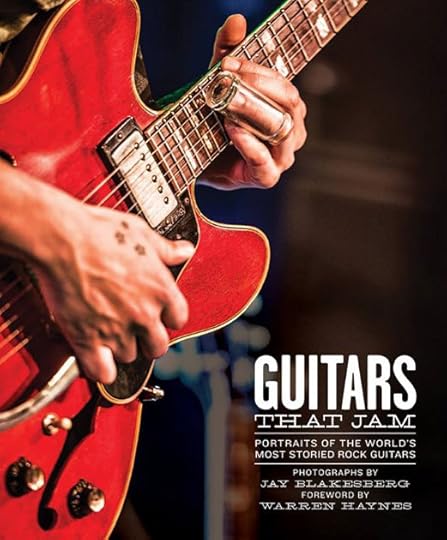
JERRY GARCIA’S 1973 D. IRWIN, CUSTOM “WOLF”
 If Tom Anderson’s recollection is correct, at the beginning of the Wake of the Flood sessions Garcia was presented with the custom guitar that would become his primary axe for the next couple of years (and intermittently for many more years). Garcia’s new axe had been crafted by a luthier named Doug Irwin, who, Rick Turner says, “came to work with me when we set up the chicken-shack factory [in Cotati]. He trained with me and eventually started making the guitars for Garcia and then split off and did his thing.”
If Tom Anderson’s recollection is correct, at the beginning of the Wake of the Flood sessions Garcia was presented with the custom guitar that would become his primary axe for the next couple of years (and intermittently for many more years). Garcia’s new axe had been crafted by a luthier named Doug Irwin, who, Rick Turner says, “came to work with me when we set up the chicken-shack factory [in Cotati]. He trained with me and eventually started making the guitars for Garcia and then split off and did his thing.”
Rick Turner hired [Irwin] for a half-time job at Alembic; he spent a year or more there, learning the ropes from Turner and Frank Fuller and devoting his free time to building his own electric guitar. One day, toward the end of 1972, Garcia was in Alembic’s Brady Street store and spied the first guitar Irwin had made for Alembic. “He bought the guitar right on the spot [for $850], and asked me to make him another guitar,” Irwin recalled in an interview.
“So I built the next guitar for him,” Irwin recalled in the same interview, “which I had actually started building at the time he ordered it; it was made out of purpleheart [also known as amaranth, a South American wood] and curly maple. It had an ebony fingerboard and mother-of-pearl inlays. This is the one that became the ‘Wolf.’”

Grateful Dead, Capitol Theater, Passaic, NJ, November 24, 1978
The guitar didn’t receive its “Wolf” moniker until later. Garcia had put a decal of a bloodthirsty cartoon wolf below the tailpiece, and after bringing it in to Irwin for refinishing between tours one year, “I knew the decal was going to be gone, so I just redid the wolf as an inlay,” Irwin said. “In fact,” Garcia recalled in 1978, “it was a week or so before I even noticed what he had done!” Garcia first played the Irwin guitar on the October ’73 tour.
Beginning with the fall 1977 tour, Garcia stopped playing Travis Bean guitars and went back to the Irwin “Wolf,” which a little earlier had been retooled to include the effect loop and unity-gain buffer that had worked so well in the TB-500. Garcia never expressed any particular dissatisfaction with the Beans; perhaps he just liked the woodier feel of the Irwin axe. It was at this time, too, that Doug Irwin inlaid the “Big Bad Wolf” (as Jerry called it) on the spot where an identical sticker had been.—Excerpted from Grateful Dead Gear, by Blair Jackson
NEIL YOUNG’S 1953 GIBSON LES PAUL
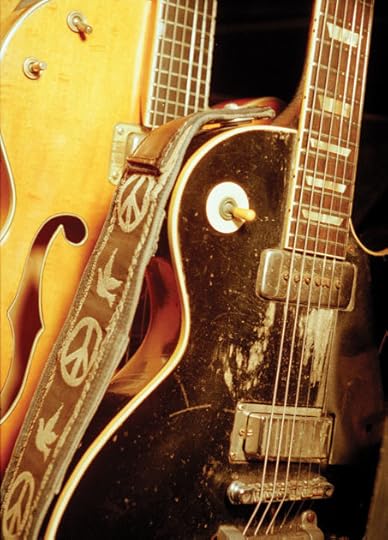 This is Neil’s main electric guitar. It’s a 1953 Les Paul goldtop that’s been painted black—in 1953 they only made gold Les Pauls. It’s got a mahogany neck and a mahogany back with a maple cap on the top.
This is Neil’s main electric guitar. It’s a 1953 Les Paul goldtop that’s been painted black—in 1953 they only made gold Les Pauls. It’s got a mahogany neck and a mahogany back with a maple cap on the top.
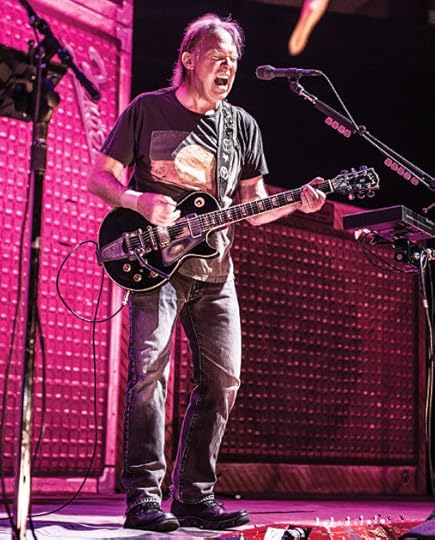
Neil Young & Crazy Horse, Key Arena, Seattle, WA, November 10, 2012
Originally, the ’53 Les Pauls came with what’s called a “trapeze bridge.” The strings came from underneath the bridge because the neck wasn’t tipped back far enough in ’52 and ’53, which made the guitar pretty much unusable. In ’54, they got rid of that bridge because they tipped the neck back to its present position, but the thing with having less of a neck angle is that you can have a lower bridge, which works much better for a Bigsby, which Neil has used extensively. So this has a Gibson Tune-o-matic bridge on it, and it has a Bigsby B7 vibrato on it.
Originally, this guitar was made with two P-90 single-coil pickups. In the early ’70s, Neil took it to a luthier to have some modifications done. When he came back to pick up the guitar, they’d gone out of business. Neil tracked down the guitar, but the bridge pickup was gone. So they put in a late ’50s Gretsch pickup, a DeArmond pickup with adjustable magnets for the poles. It’s a special Gretsch pickup, and it’s only in the bridge position. The neck pickup was still the P-90, but they put a silver cover on it. I started working for Neil in ’73, so this was the condition I found the guitar in, with the DeArmond pickup and the Bigsby and the Tune-o-matic.
“Neil has even talked into it, screamed into it, and you can hear it coming out of his amplifier.”
After a year I put a Gibson Firebird pickup—a small, two-coil humbucking pickup—in the bridge position. The Firebird is a very unusual pickup noted for its particularly bright tone. This particular pickup is remarkably microphonic. If you tap on the guitar, you can hear it. Neil has even talked into it, screamed into it, and you can hear it coming out of his amplifier. It’s that microphonic, which contributes to the unique sound he gets.
I found the remnants of a switch in the middle of the four knobs. No switch was there, and what it did I don’t know. So, what I ended up doing was put a miniswitch in that hole and routed the bridge pickup directly to the jack, bypassing both the volume and the tone control on that pickup. After I did that, Neil said, “It’s like it goes to 11 now.” You’d be surprised how much energy and tone gets absorbed by the volume and tone control. It’s a remarkable guitar. It has extremely low action and plays really great. —Excerpted from interview with guitar tech Larry Cragg
BOB WEIR’S 1959 GIBSON ES-335
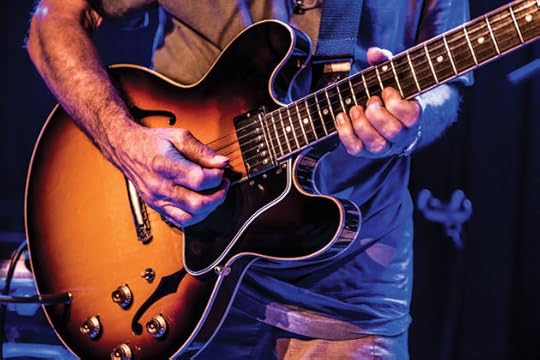 It was my first time in Nashville—I think it was around 1970—and I went to
It was my first time in Nashville—I think it was around 1970—and I went to
Gruhn Guitars there—great guitar shop. I was just nosing around, playing a few guitars, and one of the guys in there was watching me—and he said, “You ought to look at this guitar.” He pulled it off of a rack, and I played it and fell in love with it. It was 350 bucks. Back then that was a lot of money—it was a couple months’ rent—but I had to have it. It’s worth a couple hundred times that now—it still has all the original parts. It’s pretty much the holy grail of thin-body guitars.
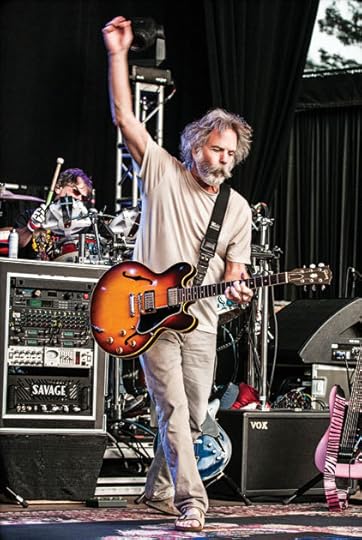
Furthur, Bill Graham Civic Auditorium, San Francisco, CA, December 30, 2011
I was immediately drawn to the feel of it. I also liked the way it sounded, but I loved the feel—loved the neck, which is relatively slim for a Gibson. Sonically I can do just about anything. It’s not going to sound like a single-coil guitar—it’s definitely a Gibson—but that said, it can get bright, real bright. In fact, I generally play it pretty bright. It has wonderful balance. The tone isn’t real tubby. Sometimes Gibsons have a sort of tubby tone, but not so with this particular guitar. And it works well both in the studio and live—it’s good no matter where you plug it in.
May 19, 2015
PREVIEW “Spots of Time” – Warren Haynes Announces Details of Album with Railroad Earth
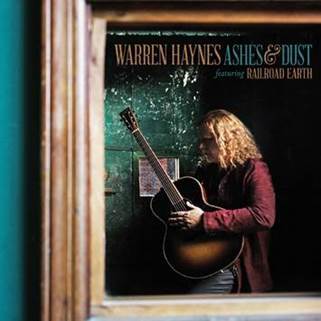
Warren Haynes has announced the details for Ashes and Dust, his new album with Railroad Earth, due out July 24 on Concord Record.
I visited Warren in the studio during the recording and was able to hear rough mixes of over half the album. It sounds great.
Ashes and Dust features plenty of new material, along with a few songs that Haynes penned 20 or 30 years ago. Allman Brothers Band fans will recognize the oft-played “Spots of Time,” a never-before-recorded tune that Haynes co-wrote with Phil Lesh and which here features Haynes’ longtime ABB bandmates Oteil Burbridge and Marc Quinones. Check it out:
“I’ve been writing songs all my life from a more folky, singer-songwriter, even Celtic direction,” Haynes says. “For a while, I’ve been compiling songs that didn’t necessarily fit in with Gov’t Mule or the Allman Brothers or even my last solo album. So this record was really a chance to bring a lot of that music to fruition. It’s really given me the opportunity to take a lot of songs I love, that didn’t have a home, and build a home for them.”
Haynes invited Railroad Earth to back him on the new release, and co-wrote “Word on the Wind” with Railroad’s Todd Sheaffer.
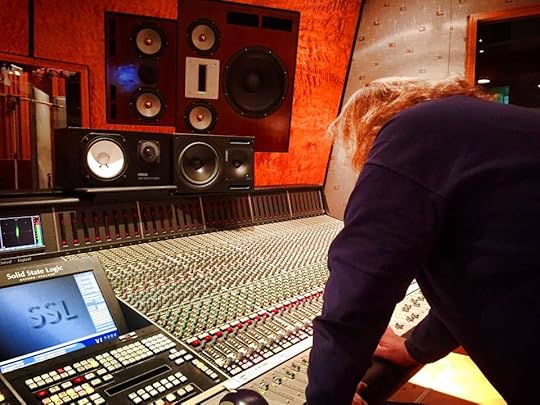
Warren in the studio, playing me some tracks.
“We’ve known each other casually for several years, and then at Del-Fest a few years ago, we winged a few songs together and it went really well. A little later, when I was opening the Capitol Theatre in Port Chester, NY, they joined me for part of the set. We did that with a little more rehearsal, more preparation, and it was a great experience. At that point, I started thinking that maybe I should make my next record with these guys.”
In addition to Railroad Earth, Ashes and Dust features appearances by Grace Potter, on a duet a cover of Fleetwood Mac’s “Gold Dust Woman,” as well as singer-songwriter Shawn Colvin and longtime Willie Nelson harmonica player Mickey Raphael.
Ashes and Dust tracklist:
Ashes and Dust Tracklisting:
1. Is It Me Or You
2. Coal Tattoo
3. Blue Maiden’s Tale
4. Company Man
5. New Year’s Eve
6. Stranded In Self-Pity
7. Glory Road
8. Gold Dust Woman featuring Grace Potter
9. Beat Down The Dust
10. Wanderlust
11. Spots Of Time
12. Hallelujah Boulevard
13. Word On The Wind
Deluxe Edition (bonus CD):
1. Company Man (demo)
2. New Year’s Eve (demo)
3. Glory Road (demo)
4. Wanderlust (demo)
5. Hallelujah Boulevard (live from 12/28/2006)
// ]]>Amazon.com Widgets
May 15, 2015
B.B. and Buddy – my story in the New Yorker
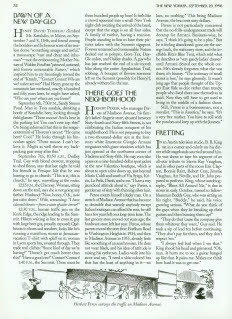 In 1995, I had dinner with BB King and Buddy Guy in an Austin, Texas studio. It was after rehearsal and before recording the Tribute to Stevie Ray Vaughan. As we ate, the two had the most incredible conversation, all captured on my tape recorder – the same one Clapton’s bodyguard wanted to lodge inside me, but that’s another story for another time. I wrote it up and sent it into the New Yorker, cold. It ran in the 9-23-96 issue and I’m happy to say it is still on their website. Here it is on mine.
In 1995, I had dinner with BB King and Buddy Guy in an Austin, Texas studio. It was after rehearsal and before recording the Tribute to Stevie Ray Vaughan. As we ate, the two had the most incredible conversation, all captured on my tape recorder – the same one Clapton’s bodyguard wanted to lodge inside me, but that’s another story for another time. I wrote it up and sent it into the New Yorker, cold. It ran in the 9-23-96 issue and I’m happy to say it is still on their website. Here it is on mine.
**
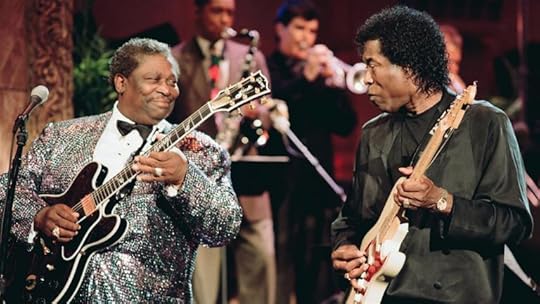
In an Austin television studio, B. B. King sat in a corner and calmly ate his dinner while stagehands scurried around him. He was about to tape his segment of an all-star tribute to Stevie Ray Vaughan, and in other parts of the room Eric Clapton, Bonnie Raitt, Robert Cray, Jimmie Vaughan, Art Neville, and Dr. John prepared to perform. King, whose autobiography, “Blues All Around Me,” is due in stores in early October, turned to fellow-bluesman Buddy Guy, who was sitting on his right.
“Buddy,” he said, his voice growing serious. “What do you think of the guys when they be breaking up their guitars and then burning them up?”
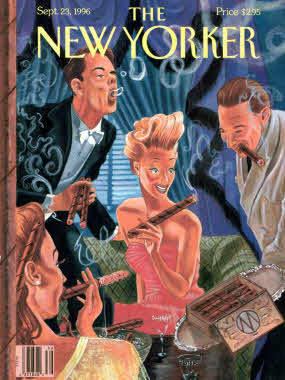 “They do that ’cause the company give them whatever they want,” Guy said. He took a sip of iced tea before continuing. “They don’t pay for them, and they don’t respect ’em.”
“They do that ’cause the company give them whatever they want,” Guy said. He took a sip of iced tea before continuing. “They don’t pay for them, and they don’t respect ’em.”
“I always feel bad when I see that.” King shook his head and grimaced. “Oh, man. It hurts me to see a guitar banged up like that. It pains me. Makes me think how hard it was to get one.”
“Yes! I had days where I didn’t eat, when my stomach was growling and the only thing of value I had was my guitar.” Guy’s eyes grew misty for a split second. “But I wouldn’t hawk it. I went literally hungry, but I just wouldn’t give up my guitar. I have hawked my coat in the middle of a Chicago winter and froze half to death because I wouldn’t part with my axe. I mean, I have dropped mine accidentally and cried.”
“That’s right,” King said. “Anytime you have something that’s taken care of you, that you can depend on every night, you treat it with love and respect You don’t destroy it. You don’t take your anger on it.”
“No, you don’t,” Guy agreed. “You treat it with love. My guitar is the only thing I can tell my wife is gonna sleep between her and me and she won’t get mad. I tell her, ‘I found you with this and I want it by my side. Don’t move it.’ And she won’t.”
“Mmm-hmmm.” King nodded his head vigorously. “That’s right.”
// ]]>Amazon.com Widgets
May 12, 2015
Where Ya Been Frank Marino
Amazon.com Widgets
In 2005, I caught up with Mahogany Rush’s Frank Marino for Guitar World. Just stumbled back across this story and enjoyed reading it I hope you do, too.
 After touring as the leader of Mahogany Rush for over 20 years, Frank Marino decided he had enough in the fall of 93. On the verge of becoming a dad for the first time, he returned to his Montreal home and called it a day.
After touring as the leader of Mahogany Rush for over 20 years, Frank Marino decided he had enough in the fall of 93. On the verge of becoming a dad for the first time, he returned to his Montreal home and called it a day.
“I got back from a tour and said, ‘I’ve had it. I can’t do this anymore,’” recalls Marino, who fiery, Hendrix-influenced playing has won the praise of Zakk Wylde and others.
The guitarist immersed himself in family life and in running a computer/audio/video networking company with his wife. Then the Internet came around and Marino logged on to do some genealogical research for his father, who was searching for long-lost relatives. He stumbled instead onto a Mahogany Rush fan site. Astounded by the continued interest in his work and by the passion of his fans, the ever-polite Marino sent a thank you note to the webmaster, which led to him becoming involved with the site.
“I streamed some songs, which I had recorded just for me, “ recalls Marino. “I get the same enjoyment from music whether the performance is public or private and I had no intention of releasing these tracks, but the interest and encouragement was very nice.”
Those tracks became 2000’s Eye of the Storm, his first album in 8 years, which sparked a slow but steady re-immersion into the music business. He is now with Just a Minute Records, which recently released Mahogany Rush’s two-CD Real Live! and will slowly re-release new versions of all the old albums for which Marino can secure rights.
“I’ve just stumbled back into this his but now I’m doing everything on my own terms,” says Marino. “I think my playing has matured a lot. I’ve slowed down and learned to listen a lot more, not just to my own guitar, but also to everything. I am more tuned in to the band, which makes the jamming more realistic – and we are a jam band. I am enjoying this whole thing a lot more than I did the first time around.”
// ]]>Amazon.com Widgets
May 5, 2015
B.B. King video lesson 2 – soloing
// ]]>Amazon.com Widgets
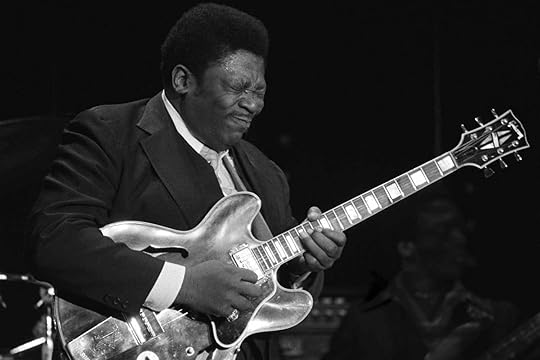
Photo by Kirk West
With the terrible news that B.B. King is in home hospice care, we will continue to celebrate his legacy as much as possible.
Today, we have another video lesson, focusing on soloing. As noted yesterday, that’s my friend Askold Buk interviewing B.B. King in this great clip from the instructional videos they did together in the early 90s:
// ]]>Amazon.com Widgets
May 4, 2015
B.B. King video lesson – playing scales

Photo by Kirk West
How about a video lesson from B.B. King? With the terrible news this week that the King is in home hospice care, I want to celebrate his legacy as much as possible.
That’s my friend Askold Buk interviewing B.B. King in this great clip from the instructional videos they did together. Askold and I were working at Guitar World together at the time these were filmed in the early 90s and I remember it well. Enjoy.
This little lesson is about playing scales. We’ll post B.B. on soloing tomorrow.
May 1, 2015
Gregg Allman at the Roxy – By Bob Lefestz

Photo by Jay Blakesberg
THE FOLLOWING WAS NOT WRITTEN BY ME, BUT BY BOB LEFSETZ.
I don’t agree with it all – “hot ‘Lanta” is not GA’s showcase – but totally dig the concept, and shared it here, because I thought my readers would enjoy. I have been a regular reader of The Lefsetz Letter for years. Check out his archives. Bob attended Gregg Allman’s 4/24 special show at The Roxy in Holywood, CA. His report:
The Allman Brothers had a slow build, their initial album was ignored, the second was known only by cognoscenti and the third blew up, not through airplay, but WORD OF MOUTH!
Imagine there was a band so good, people couldn’t stop testifying about them, dragging their friends to a show so adventurous yet refined that it fulfilled all your dreams. Never forget, it was the Allmans that closed Watkins Glen, the Band and the Dead opened for them.
STATESBORO BLUES
This was the opener. An air guitar number so fast and furious you could not play it at home. That was the genius of Duane. He started off at 100 MPH and stayed there. The Allmans had something to prove. It was they who initiated southern rock, everybody else went through the door they opened. And when you’re breaking ground you can’t screw up, you can’t just be good, you’ve got to blow people away!
“Statesboro Blues” was the opening cut on “Fillmore East.” You dropped the needle that fall of ’71 and you were off on a wild ride, as we were Friday night. Gregg may look worse for wear, but his voice is still there, after the opening riff, after the band locks into the groove, Gregg starts to sing and then drifts his fingers over the organ keys and you’re taken right back to what once was when.
TROUBLE NO MORE
I’ll argue that the Allmans’ debut was their best work. It was sterile, the production was off, the live album is more them, but through the scrim you can hear them working their asses off, with that exquisite concoction of confidence and desire to prove.
I bought it after “Idlewild South” and “Fillmore East.” You’ve got to hear the compact five minute version of “Whipping Post.” But the highlight is “Trouble No More.”
“Don’t care how long you go
Don’t care how long you stay
Good kind treatment
Bring you home someday
Someday baby, ain’t gonna trouble, poor me, ANYMORE”!
You put me through the grinder, but not only am I done with you, I’M OVER YOU! Easier said than done, but you’re helped by music. It’s the essence of metal, it’s something pop rarely delivers. You want a sound that drowns out all the noise, that picks you up and carries you away. And that’s “Trouble No More.” Listening to the rendition Friday night I was taken right back and completely away. I got that hit of what once was. When you went to the show to be transported, away from regular life, all the b.s.
THESE DAYS
So Gregg straps on an acoustic, begins strumming one of the most famous songs in his canon, one written by Jackson Browne and done by so many others but made legendary by him on his solo album “Laid Back.”
Does it get any better than this?
NOT FOR THIS AUDIENCE!
Let me get this straight, you’re paying a hundred bucks to get in, you’re at a unique experience and you can’t even pay attention, never mind respect?
Bummed me out immensely.
What is it, the lack of seats? When they were torn out did concertgoers lose all decorum?
Or is the me generation, where everybody is a star. Gregg’s up there pouring out his heart and no one cares. I couldn’t find a box to put it all in.
AIN’T WASTIN’ TIME NO MORE
The opening cut on “Eat A Peach,” the posthumous album with a bit of new stuff and a bunch of old Duane. It never gets any respect, it’s never mentioned, but it’s a personal favorite.
“You don’t need no gypsy to tell you why
You can’t let one precious day slip by”
You’ve got to look inside, you’re the only one with the answers. Just put on a record, lay back and think, the truth will come.
Just talk to any baby boomer in the business, they heard this music and had to get closer, they didn’t get in to get rich, but to be next to the art and the artists, to turn others on to the elixir. The scene was run by musicians, who could testify about influences and desires if they could talk at all, who didn’t know brands other than Jack Daniel’s and Marlboro, who had handlers who whipped off hundreds as they did whatever they chose, knowing the music would carry them through and make everything right.
And sure, music was not free. But it was the music that generated all this heat. Because it’s all about belief. Music is religion, excise that element and you’ve got soulless pabulum that’s here today and gone tomorrow, unlike the music of the Allman Brothers.
HOT ‘LANTA
I remember my family being pissed I called it that. A friend was going to the capital of the south, and I said they were going to “Hot ‘Lanta” and I was EXCORIATED!
Welcome to my life. Persecuted when I was not ignored. I found solace in my records, when the world was closing in I put them on.
This is Gregg’s showcase, he played it right after his break, right after introducing the band.
I know it by heart.
MELISSA
Uh-oh. Another acoustic number. Everybody’s talking. Walla if you’ve ever worked in the movie business. And then Gregg reaches the chorus and the assembled multitude sings…SWEET MELISSA! Almost a sigh, in unison.
The reason there are so many thirtysomething Melissas is because of this song. That’s the power of music.
MIDNIGHT RIDER
Same deal.
Come on, can you mistake the intro? With the groove of a clomping horse? Gregg’s giving it his best, everybody’s talking and then when he reaches the chorus everybody sings…MIDNIGHT RIDER!
It was like a bizarre horror movie. Where the zombies wake up every once in a while and utter a key phrase. Every time through, every chorus. It’s like their brains had been removed but the song was in their DNA!
SOUTHBOUND
So, let’s see. Arena act, STADIUM ACT, survives but ends up playing a club.
But that’s not really what happened. It was a special gig tied into Stagecoach, Allman doesn’t usually play venues this small, never mind with a full horn section, and, as stated above, tickets were $100.
Still…
Was this like the jazzbos, playing deep into the night earning their keep…
Or was it a legend coming down from the mountaintop to deign us with excellence and then disappear?
You’ve got to understand, it used to be different. We used to be bored, we used to go to the bar to connect, you couldn’t do it on the internet, there’d be a jukebox, and for a while there in the seventies, it was populated with Allman hits.
But really, the band was for the dorm room, the house party, when you were all sitting in a circle with the lights down low, drinking Bud and bourbon, getting higher and higher, communing with your buddies, dreaming of getting laid but getting none.
But Gregg was getting enough for all of us. He was our hero, not someone to make fun of, but to emulate.
Not that we could ever be him. But just maybe, inspired by his music, we could achieve our dreams. Which included good sex, a fulfilling job and tickets to the show, we had to go to the show.
And we still do.
Because we remember.
When music tested limits, when it changed the world.
Bob Ezrin was right.
And if you don’t believe so, you’re young and ignorant or an oldster trying to look hip. Sure, there’s good music today. But it used to be different. Music was peopled by the best and the brightest, testing limits. The entry price was low. Albums were way under ten bucks and so were tickets. And you had to go the show, to not only be transported, but to change your life.
Music is forever.
But there was only one Renaissance. They’ve made music since the sixties and seventies, but the coalition of forces engendered greatness that hooked the entire world. The radio station was your bible, the music was your religion and the rock stars were your gods.
Still are.
CODA
He’s 67 and looks it. He’s not exactly frail, but he’s not the picture of health. Up close and personal he’s a southern gentleman, with a voice so soft you can barely hear, but with a brain working overtime. He told me about breaking his arm, playing a gig the next day. And when I asked him what he thought about everybody talking during “These Days” Gregg said he didn’t even notice, because he was in the ZONE!
They do it for themselves, not us.
You can tell the difference.
And it makes all the difference.
You can get close, but you’re never gonna catch the midnight rider.
—
Visit the archive: http://lefsetz.com/wordpress/
// ]]>Amazon.com Widgets
Carlos Santana and Warren Haynes to Join Phil Lesh at Lockn’
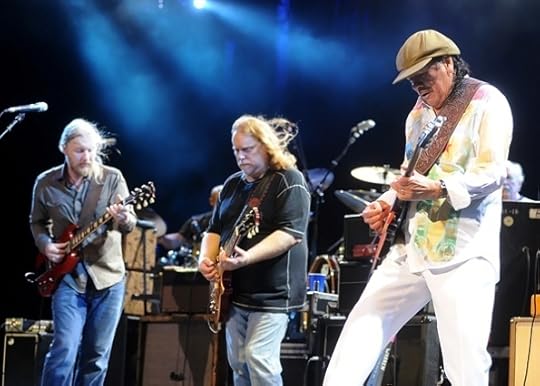 Well, this could be interesting.
Well, this could be interesting.
Phil Lesh & Friends will perform twice at this year’s Lockn’ Festival and number two will feature special guest Carlos Santana joining Warren Haynes, Barry Sless, Rob Barraco and John Molo. This lineup joins the previously announced Friends lineup featuring members of Chris Robinson Brotherhood like Robinson, Neal Casal, Adam MacDougall, Eric Krasno and Tony Leone.
But the Lockn’ set that really intrigues me is Mad Dogs & Englishmen A Tribute To Joe Cocker Featuring Tedeschi Trucks Band with Special Guests Leon Russell, Dave Mason, Rita Coolidge, Chris Robinson, Doyle Bramhall II and Friends. My man Kirk West did a good thing when he turned Derek onto Mad Dogs & Englishmen years ago!
Santana guested with the Grateful Dead throughout their career. Here he is with them 1-26-93 at the Oakland Coliseum for “Stella Blue”:
// ]]>Amazon.com Widgets
April 26, 2015
Allman Brothers Band “Ramblin Man” – Hofstra, 11/2/72
Allman Brothers Band “Ramblin Man” – Hofstra, 11/2/72. Only show featuring Berry Oakley and Chuck Leavell together.
After they recorded the song but, of course, before it was released. Impossible to watch this and not wonder “what if?”
April 10, 2015
Free Download from Gov’t Mule’s Dub Side of the Mule
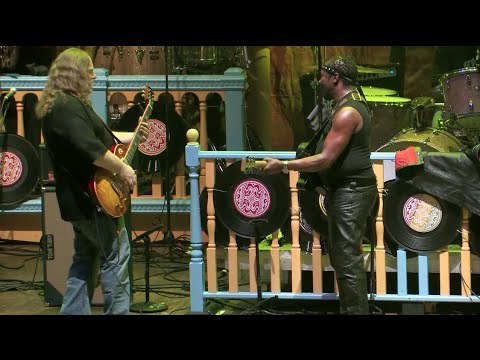 Gov’t Mule is offering a free download of “Reggae Soulshine” from the forthcoming album Dub Side of the Mule , featuring Toots Hibbert of Toots and the Maytals. Dub Side of the Mule was just released on Evil Teen Records.
Gov’t Mule is offering a free download of “Reggae Soulshine” from the forthcoming album Dub Side of the Mule , featuring Toots Hibbert of Toots and the Maytals. Dub Side of the Mule was just released on Evil Teen Records.
Click below to download for free.
Buy Dub Side of the Mule CD here.
Download on Itunes here.
Recorded during Mule’s fabled New Year Eve 2006 performance at the Beacon Theatre in New York City, the show features three-plus hours of Mule standards and covers, including a 1-hour reggae/blues set featuring Toots Hibbert. The album also includes special appearances by Gregg Allman & Friends and Blues Traveler’s John Popper.
// ]]>Amazon.com Widgets



